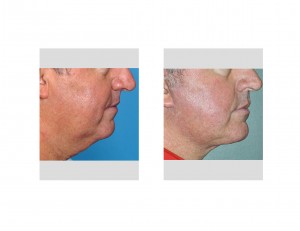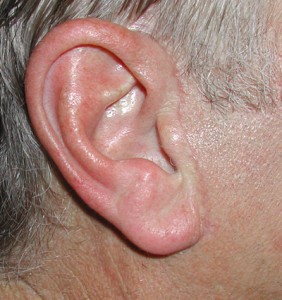Facelifts, technically known as a rhytidectomy, remains a very popular facial plastic surgery procedure despite the influence of numerous injectable facial therapies. According to statistics from the American Society of Plastic Surgeons (ASPS) in 2012, 126,000 facelift procedures were done in the U.S.. Given that there are now many different types of facelifts from Lifestyle Lifts to deep plane facelifts, these reported numbers are probably an underestimation. This does not include many filler and laser procedures that are also called ‘facelifts’.
While the aging process does occur equally in male and female faces, there are many differences between them in how the aging effects may be reversed by facelift surgery.

The Male Facelift Is Often Older Than In Women. Men historically tolerate the signs of facial aging more than women. This means they are frequently older when they present for a facelift and often have greater amounts of neck and jowl sagging. Men usually wait until the problem is more severe as opposed to many women who are more proactive. This always means that the male facelift is frequently more involved and extensive and often includes blepharoplasty and browlift surgery as well.

Neck Changes in Men From Facelifts Are More Subtle. Men principally have facelifts because they want to get rid of a hanging neck and have a more defined neck angle. But because of the heavier skin and neck tissues of men and the limitations of incision placement around the ears, they rarely will end up with a sharp and well defined neck angle that are created in the female facelift. Thus the results in the male facelift patient must be tempered as a noticeable but often more subtle neck and jawline improvement.
Bleeding and Hematoma Complications from Facelifts are Far Greater In Men. The most common significant complication from any facelift is bleeding or the development of a hematoma. This usually occurs within the first hours to day after a facelift. When this occurs, surgical drainage will be needed particularly if it is of any size. The overall risk is stated to be a 1% to 3% occurrence but this is higher for men, probably closer to 5% to 7%. Because of the beard skin in men, which has a higher number of blood vessels, and the incidence of high blood pressure in men (which is suppressed during surgery from the anesthesia but often rebounds in the recovery room or at home when the medications have worn off), this combination can lead to clots from blood vessels breaking free and bleeding.
Dr. Barry Eppley
Indianapolis, Indiana


